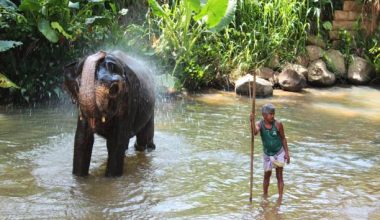Before deciding whether to live in the USA or Australia as an international student, you must first decide to study abroad. Australia and the USA are among the best places to take undergraduate and graduate programs worldwide. However, deciding on the cost of living in Australia vs. the USA will depend on factors we’ll disclose in this post.
Superficially, the two countries are similar. It takes a while to understand the differences, partially because of the ubiquitousness of US popular culture in English-speaking countries.
You’ll get the best education for any degree program in any of these countries. However, choosing a particular country to study in may depend on the type of program and opportunities you’re looking for or how long you wish to stay there.
Different students will have different reasons to want to study in either the USA or Australia.
So, to avoid making biased conclusions, let’s take a look at an overview of Australia and the USA. Then we analyze the various factors that affect the cost of living in Australia or the USA. Shall we?
Table of contents
- USA Overview
- Australia Overview
- Comparison Between Living In Australia and USA
- #1. Climate
- #2. Eligibility/Requirements of USA Vs Australia
- #4. Visa processing for Australia Vs USA
- #5. Post-Study Work Permit
- #6. Employment opportunities in USA Vs. Australia
- #7. Permanent residency opportunities
- Cost of Living as an international Student in USA and Australia
- Financial aid for international students in USA vs Australia
- Conclusion
- Reference
- We Also Recommend
USA Overview
The U.S. is a country of over 325.7 million people, with 50 states covering a vast swath of North America, with Alaska in the northwest and Hawaii extending the nation’s presence into the Pacific Ocean.
Major Atlantic Coast cities are New York, a global finance and culture center, and capital Washington, DC. Midwestern metropolis Chicago is known for influential architecture and on the west coast, Los Angeles’ Hollywood is famed for filmmaking.
There is no doubt that the united states hold a good ranking when it comes to places for international students worldwide. A large proportion of adults in America have a university education – 43%.
That is the fifth-highest proportion in the OECD. Often, students from different parts of the continent still pursue education in the united states.
Universities in the United States also have their acceptance rate on the good side in percentage, even though it varies with schools and is dependent on certain factors.
SEE ALSO: 25 Most Affordable States to Study in USA for International Students
Australia Overview
Australia is a country and continent surrounded by the Indian and Pacific oceans. Its major cities – Sydney, Brisbane, Melbourne, Perth, Adelaide – are coastal. Its capital, Canberra, is inland.
The country is known for its Sydney Opera House, the Great Barrier Reef, a vast interior desert wilderness called the Outback, and unique animal species like kangaroos and duck-billed platypuses.
Australia is a well-educated country with a particularly high proportion of tertiary-educated adults. 43% of adults have trained at an institution after leaving school – that’s behind only Canada, Japan, Israel, Korea, the US, and the UK.
Just like the USA, Australia is now one of the fastest and growing study abroad countries for any International student.
International students’ acceptance in Australian universities is quite high as there is always a place for students regardless of where they come from or what they have come to study.
Read Also: Most Affordable Places to Live in Australia for International Students
Comparison Between Living In Australia and USA
Australia and the USA have many similarities, even though the U.S. is generally a more expensive place to live as an international student. However, you should know why you should live in one instead.
So, we will proceed to point out their differences using key areas that affect the cost of living. We hope that you’ll know which country satisfies your study interest and living budget when you’re done reading through.
#1. Climate
USA
The US is a huge land area with varied temperatures and climates in various areas. East Coast has a warm climate covering cities like St. Louis, NYC.
The Midwest and New England regions have frozen winters and cover cities like Chicago, Boston. The Pacific Northwest has a humid oceanic climate covering cities like Seattle and Portland.
The Southwest has a hot desert climate covering cities like Phoenix and Las Vegas. The southeast has a warm to hot, humid climate covering cities like Houston and New Orleans.
Australia
The country Australia is located in the southern hemisphere. This means Australia’s summer begins in December, and winter starts in June.
Approximately a third of Australia is in the tropics, where the average temperatures are in the middle of 20 degrees Celsius. The southern areas are in a temperate zone.
#2. Eligibility/Requirements of USA Vs Australia
USA
For undergraduate courses in the USA, you must have finished 12 years of schooling. To gain admission though you need to sit for the SAT exam.
However, you require 16 years of education as an international student in postgraduate courses. For Indian students, it changes to 12 years of schooling and four years of undergraduate education.
Nevertheless, since most Indian colleges grant three years of education at the undergraduate level, you might require a one-year course to cover up the difference.
Also, if you have studied from a premier Indian institute, some USA universities might allow your three years degree as well, though the cases are few. You can check with the university’s acceptance number and inquire about your case.
To gain admission in management courses, you will have to sit for GMAT; for science courses, you’ll be required to give the GRE. There are no cutoffs for colleges, so you must score the best you can in all the exams.
Colleges make provision of the average scores they accept for different courses on their websites. That will give some insight into what they consider a good score in the college. You will also require to sit for language exams like TOEFL or IELTS, not minding the degree.
Even though the colleges may not need any language test for Indian students, you should still give either TOEFL or IELTS as they are necessary for getting a visa.
In the case of MBA, you might need a few years of work experience.
Australia
For undergraduate courses in Australia, almost all universities need 12 years of pre-university education, which makes it simpler for Indian students to gain admission directly to the course or degree of their preference.
In postgraduate courses, you can gain admission after completing a three-year undergraduate degree. In the case of engineering, you will require a four-year undergraduate degree in engineering.
To gain admission in management courses, you must sit for GMAT; for science courses, you may need to sit for the GRE exam.
You might not be expected to have work experience in the case of management courses at some colleges.
Without work experience, you’ll have to enroll in a graduate certificate or graduate diploma program. TOEFL or IELTS may be waivered by the university but are necessary for the idea of getting a visa
#4. Visa processing for Australia Vs USA
USA
A full-time USA student visa is called an F1 visa. This visa has the following regulations:
- A personal interview is mandatory, and you will need to sit for an appointment to present Biometrics.
- You can remain in the USA up to 60 days beyond the period of time it takes to finish your academic program unless you have been permitted to stay and work for a duration of time under the OPT Program (Optional Practical Training)
- It costs about $160 to apply for this visa. You will need to pay an additional sum of $160 for the dependent visa (per dependant)
- You cannot work for over 20 hours a week. During holidays, breaks, and summer sessions, the student may be able to work for up to 40 hours per week. The student can only work on-campus for a commercial firm that renders services to the college, such as a bookstore or cafeteria.
Australia
For an Australian student visa, on the other hand, these rules apply:
- They don’t give an Australian student visa in the form of a sticker.
- It costs about $535 to apply for this visa.
- Spouses get dependant only if the student is seeking a Master’s degree or Ph.D. The spouses of Masters and Ph.D. students can work unlimited hours.
- Student visa holders are permitted to work up to 40 hours per fortnight while studying in Australia.
The student visa foreign students need in Australia is the Subclass 500. It currently costs about US$535.
In addition to paying for the visa, the student also must organize health insurance during the duration of study in Australia. This is a visa essential and you must buy it for your stay.
Universities will provide recommendations for reputable insurers. For a single person (with no partner or dependents) the cheapest alternative for this health cover is roughly $1,550 for the three years of study (presuming the student returns to their home country during the summer break).
Some universities in Australia will also require an application fee for international students. The University of Sydney, for example, imposes an additional fee of $87 per year of study.
#5. Post-Study Work Permit
USA
As an international student, if you want to stay in the US to get practical knowledge of your subject, you can do so through OPT.
It is temporary employment permission that grants students the chance to gain practical experience in their field of study for a 12-month duration.
You can apply for OPT after being employed for at least 9 months, but you cannot start employment until you get your Employment Authorization Document.
This Student Co-Op Program is a formally-structured program that aims to recruit students, while still in school, to occupy permanent positions upon graduation.
Co-op programs are usually undertaken at colleges and universities. In most cases, you will have to apply for a Work Visa upon receiving a full-time job of permanent nature.
Australia
Graduates who have completed a Bachelor’s degree, Master’s degree may be qualified to apply for a two-year post-study work visa.
Other graduates may be qualified to apply for an 18-month subclass 485 visas through the graduate work stream.
Australia continues to request international workers, and students who have a degree in Australia have a special work visa category.
There are also many other visa categories available to foreign students in Australia, and Australia has a very honest path to permanent residency using a points system. If you want to stay and work after graduation, you must apply for and get a work visa.
Here are a few of the categories of visas that are available:
- 485 Skilled Graduate Temporary Visa: This visa is the most common choice for foreign students after graduation. With a 485 visa, you can stay in Australia for 18 months to get work experience only if you have just finished at least two years of study in Australia.
- 402 Training and Research Visa:- Another choice for foreign students, the 442 visa is for students to develop their work skills for up to two years while sponsored by an employer.
- 487 Regional Sponsored Visa:- This visa gives a pathway for permanent residency while permitting you to work for 3 years and work in a specialized regional area
- 887 Skilled Regional Residence Visa:- The 887 visa grants you permanent residency, and with this, you can live and work in Australia permanently. You must have previously lived in Australia for two years, have a year of work experience, and have enough points.
- 885 Skilled Independent Residence Visa:- The 885 visa permits you to live as a permanent resident and work without needing to be sponsored
- 886 Skilled Sponsor Resident Visa:- The 886 visa permits an overseas student to apply for permanent residency and work while being sponsored by an employer.
#6. Employment opportunities in USA Vs. Australia
USA
Jobs in fields of study like management, advertising, finance, dentistry, software engineering, etc., are some of the top jobs in America.
Australia
For Australia, top careers include education, medical services, the hospitality industry, computer system design, accounting, etc.
#7. Permanent residency opportunities
USA
A permanent residency alternative is possible but it is a very long-drawn and slow method. It is a complicated process and needs the person applying for it to live in the US for at least five years on the grounds of employment.
After that, you will get a “Green Card”, but the process may take years.
Australia
Just like in the US, obtaining a permanent residency permit to Australia is possible but it is a long process. The immigration officials conduct a complete background check on the candidate to make sure s/he is not fraudulent.
Because of the complicated process, the PR permit may require some time to get approved but it is possible to obtain Australian citizenship.
Cost of Living as an international Student in USA and Australia
USA
The estimated living costs for the US are about $10000 to $12000 per year, which averages approximately $700 to $1000 per month.
This covers your accommodation costs, room, board, food, travel, textbooks, weather-appropriate clothing, and entertainment costs.
Here is a range of costs considered while estimating the living expenses of an international student:
- Books and study material costs about $500 to $1000 per year
- Travel costs within the US will be between $300 and $700
- Accommodation will cost between $5000 and $7500 a year.
- For living off-campus, renting an apartment will be between $300 and $600 per month but could be higher depending on the school’s location.
- Meals should cost about $2500 per year if you do not eat out several times
- Shopping for clothes will cost more than $500 yearly if you are in a cold country
- Personal and variable expenses will be about $2000 a year
Additional Costs
Students should be able to meet up with the following costs while studying in the US. Costs may increase by about 5% to 7% annually due to inflation and external factors.
- Travel costs between India and the US during vacation time
- Large purchases include PCs, furniture, or even a rental car.
- Medical payments not covered by health insurance, e.g. dental care, eye care, and cosmetic treatments.
- Extra summer expenses – room and board, grocery expenses for the summer months you stay in the US when classes are not being held
- Extra expenses such as off-campus transportation
- Entertainment, social outings, weekend trips
Australia
As mentioned earlier, living costs in Australia are very high, and you are expected to show that you have access to US$14,600 a year of study for living expenses only. The visa also requires you to show funds for return airfare.
Suppose you want to move to Australia to study with a partner or child. In that case, the amount required for living significantly increases, and you will also need to show money for the return airfare of those accompanying you, as well as money for school fees if your child is of school age.
Accommodation at universities in Australia generally costs about US$60 to US$315 per week; this depends on whether you live on campus, which provides the cheapest option, or in rented accommodation off-campus.
In addition to accommodation, expenses to consider include food (shopping and eating out), transport, bills (including gas, electricity, phone, and internet), and entertainment.
These extra expenses will likely cost anywhere between US$160 to US$470, depending on how thrifty you are!
Studying in Sydney will result in far higher living costs than studying in Adelaide, Canberra, or Melbourne. You can also check individual university websites for more direct information on living expenses in the region.
Financial aid for international students in USA vs Australia
USA
Most universities offer financial help to foreign students focusing principally on merit and rarely on need. Scholarships are easier to get for graduate studies.
Study areas that regularly receive more generous funding include engineering, physical sciences, and biological sciences.
All universities in the U.S. are required to include fees and a financial assistance calculator on their websites. You can find them on this government website.
Read Also: Full Guide on how to get Student Loans for International Students in the USA
Look for scholarships, awards, assistantships, and work-study plans, or consider study loans. Apply for financial assistance while you submit your university application for the U.S.
Here are some examples of scholarships in the US:
- Stanford University Scholarships Opportunities for International Students
- Best University of Miami Accelerated Nursing Program
- Physician Assistant Scholarships
- John and Abigail Adams Scholarship
- Drake Scholarships
Australia
Numerous scholarships and grants are available to foreign students who desire to study in Australia. Some of the foremost providers are the Australian Government, higher education institutions, and other public or private organizations.
Each scholarship provider is responsible for establishing the application standards, but most financial assistance opportunities are available to all foreign students.
Here are some examples of scholarships in Australia you can take advantage of:
- University of Adelaide Global Leaders Scholarship
- Murdoch First Undergraduate Scholarship in Australia
- 1,000 Australia Awards Scholarships for African Students With 3rd Class
- Endeavor Scholarships in Australia for International Students (UPDATED)
- 15 Australian Scholarships For International Students
Conclusion
Preparing to study abroad, whether in the US or Australia, involves so much information, so it might be challenging to know where to start. So, we’ve compiled this quick guide to help determine the cost of living as an international student in Australia and the USA.
Should I visit the USA or Australia? We hope this article helps kickstart your plans.
Good luck!
Reference
We Also Recommend
- UBC Outstanding International Student Award
- 5 important documents needed to study abroad
- How to Get Scholarship for Indian Students | How to Apply for A Scholarship
- University of Adelaide Higher Education Scholarship for International Students
Did you get value from this article? Feel free to share it and leave a comment below.
DISCLOSURE: This post may contain affiliate links, meaning when you click the links and make a purchase, we receive a commission.





1 comment
Comments are closed.